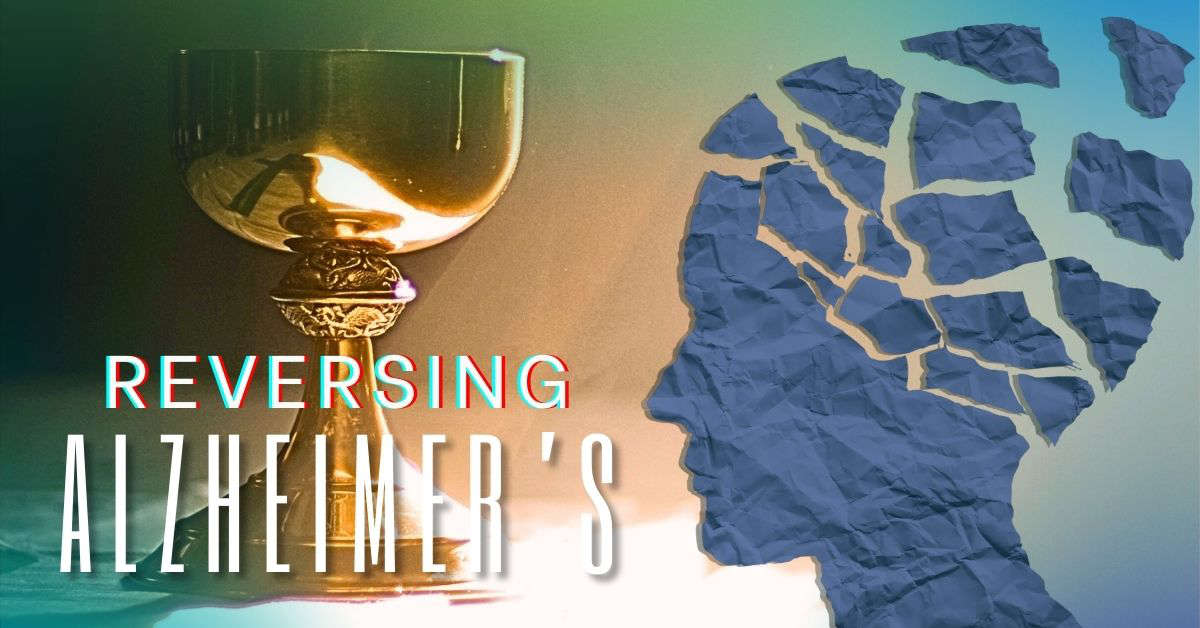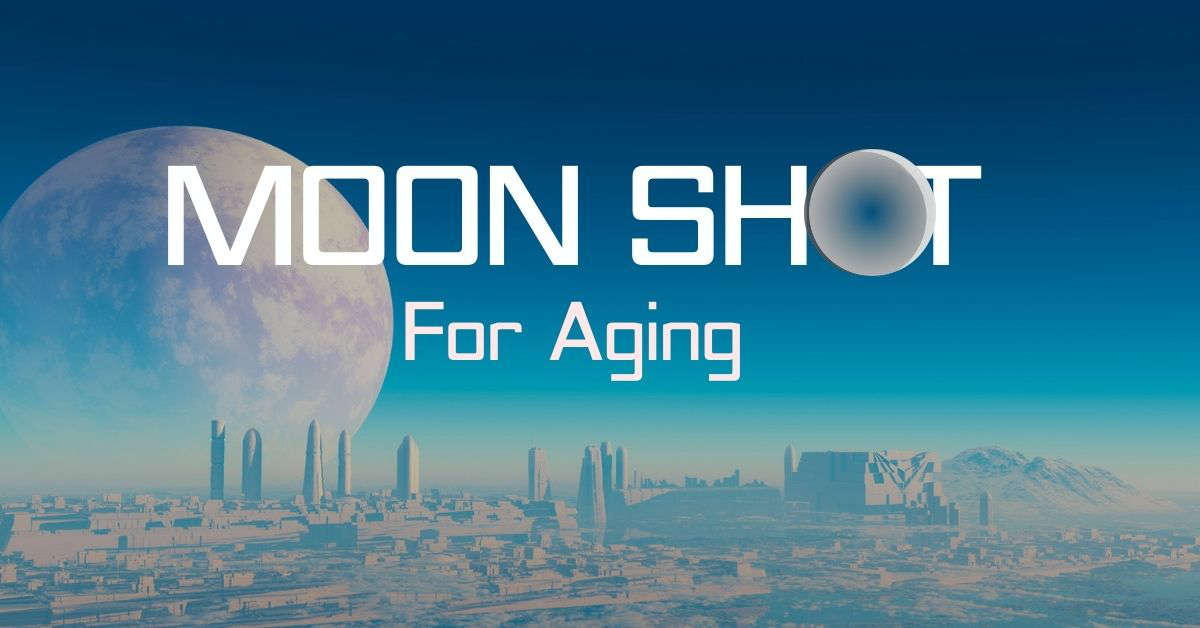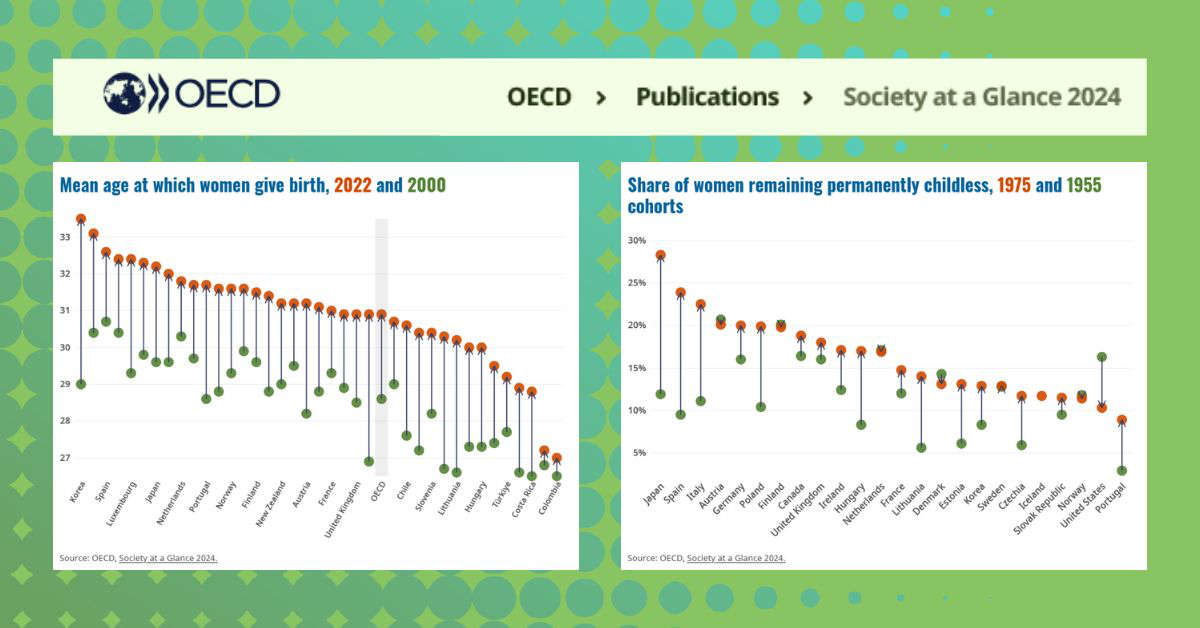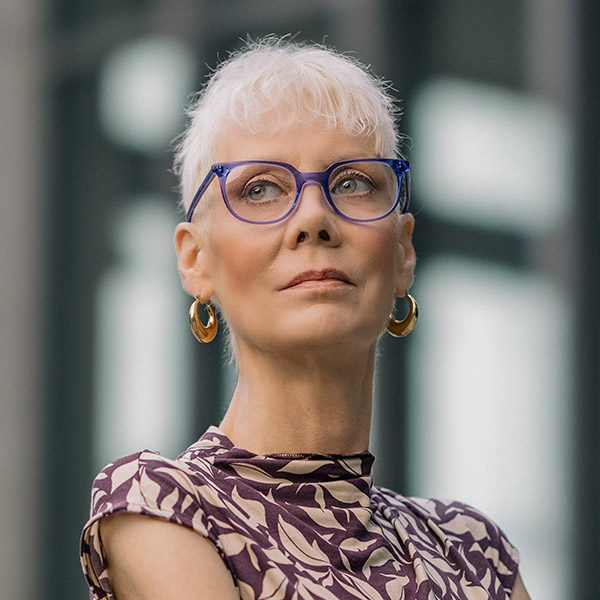From the Editor
Welcome to your source for news and analysis of the healthspan universe! This issue covers a breakthrough in Alzheimer’s disease diagnosis using AI voice analysis, and a promising study that actually restored the brain’s synaptic function after the development of AD. Follow that with this issue’s special feature, a Q&A with Melissa King, HSAC’s Chief Operating Officer, who shares her reflections on the 2024 Longevity Summit Dublin. Melissa carried the torch for the advocacy community, and as a veteran advocate, she notes that when it comes to delivering new treatments and cures to those who need them, advocacy is often where the rubber hits the road. Then read about the very first human trial for mitochondrial transplant aimed at reversing aging, the economics of changing population demographics, and news and a meeting notice from the Hevolution Foundation.

Digital Is the New Blood
Move over blood and cerebrospinal fluid tests for diagnosing Alzheimer’s disease. “Digital is the new blood,” says Rhoda Au, a co-author on a new paper in the journal Alzheimer’s and Dementia about using generative AI to analyze speech patterns in 166 people aged 63 to 97. The Boston University team led by Ioannis Paschalidis, an engineer and data scientist, utilized an AI program to review years-old recorded interviews of participants enrolled in the long-running Framingham Heart Study who now show signs of mild cognitive impairment. Even using “dirty data” like old, low-tech voice recordings, the AI was able to determine with 78.5 accuracy who would progress and who would simply live indefinitely with MCI. While so far it has been difficult to predict whether patients with MCI will go on to experience full-blown AD, early diagnosis offers a chance of intervention, when drugs like Aricept can temporarily slow the progression of the disease.

The Holy Grail: Reversing Alzheimer’s?
Often by the time AD patients display symptoms, it’s too late to benefit from treatment. The holy grail in treating Alzheimer’s is finding a way to not only arrest its relentless march but to reverse damage to neurons and synapses once it develops. And it may not be enough to clear away the gummy buildup of protein fragments in the brain, a frequent research target; what the world’s 55 million dementia patients desperately need is an intervention that actually improves their functionality. Now there’s big news on that front hailing from Japan. In an open access paper published in Brain, lead author Chia-Jung Chang describes a study introducing the synthetic peptide PHDP5 to transgenic mice developed to exhibit AD. The peptide crossed the blood-brain barrier and enhanced synaptic function, leading to improved memory performance. The research targeted the availability of the good protein dynamin, which in AD is vacuumed up by the rogue protein tau, with the peptide and restored the balance of microtubules, which are key to synaptic function. For AD patients and their loved ones, a delay of even a couple of years in the progression of the disease would be a Godsend. The study, led by Tomoyuki Takahashi at the Okinawa Institute of Science and Technology, cites early intervention as key to the effectiveness of the treatment.

Q&A WITH HSAC’S CHIEF OPERATING OFFICER – MELISSA KING
Following last month’s Longevity Summit Dublin, at which she spoke about the importance of advocacy in moving the healthspan field forward, HSAC co-founder, Chief Operating Officer and longtime regenerative medicine advocate Melissa King offered her reflections in a Q&A. She takes the pulse of the summit and the entire healthspan/longevity field from numerous angles, all of which add up to advancing the global human healthspan.
EH: There was a huge breadth and scope to the science presentations. Was there a particular line of research that you thought stood out?
MK: My favorite talk this year was by Alec Lackman, a biologist and Fisheries Scientist at the University of Minnesota, Duluth.
Dr. Lackman studies the Bigmouth buffalo fish, which can live to more than 125 years. This fish is slow to mature, doing so over many decades. Their age ceiling is unknown, and they actually have physiological improvements at 100 years old! (Sauer et al 2021 / Nat Geo) Sadly, as Dr. Lackman pointed out, this fish has been unfavorably labeled, considered “rough fish” and therefore they are neglected, both scientifically and environmentally, and there are no regulations to protect them. In recent years, the lack of regulation has allowed for it to become popular to kill these fish en masse and leave piles of them as waste. From an animal lover’s perspective, this is cruel and sad. From an environmental perspective, it is terribly short-sighted. From a scientific perspective, we now know, thanks to Dr. Lackman, this is asinine. This is a fish that lives to over 100 years old and is still improving at 100. Think about what we might be able to learn from this fish. But we want to study fish that make it to 100+, and there won’t be any left if ignorance plus no regulation leads to more and more of them being killed. As an animal and earth loving science advocate, I was appalled by what he shared and it made me think about how everything is connected. These fish need advocates, just like medical research and patients suffering with various diseases need advocates. And if we advocate for the fish, it could help lead to discoveries that could better treat or even cure diseases.
EH: Longevity is a multifaceted subject, embracing not just science but policy, advocacy and economics. Did any of the non-science sessions stand out in your mind as especially important?
MK: I was heartened to hear Michael Ringel of BCG and the Hevolution board say, in response to a question about developing a drug/treatment to address multiple issues rather than just one disease, that drugs are approved for specific indications and that’s OK—there’s no need to focus only on a drug that addresses several things, like some in the longevity field advocate for and are working on now. This is important because we don’t want to see the field divided into those who want to only work on something to treat everything, all at once, related to aging and those focused on a particular target like curing Parkinson’s disease. We need all of this work to be done, and we never know from which projects the discoveries we need will come. Someone working to cure Parkinson’s disease, for example, may crack some of the code of aging, or discover something that can cure a different disease. Let’s not limit ourselves while we’re just getting started.
EH: As COO of the Healthspan Action Coalition with a long track record in advocacy, do you feel that the advocacy side of things was well represented?
MK: I was happy that the concept of advocacy was so well received. The opening talk of the conference was given by Michael Suk, Chair of the Board of Directors for the American Medical Association, and he highlighted the clear and present possibility for truly personalized medicine, based on the work by people like the scientists at this conference. That was great: it set the right tone.
The longevity field, while not at all new, is currently in a time of huge growth, and growth at an increasing rate. More and more scientists or scientists-to-be are going into longevity and healthspan-related research, and more of the public becomes interested daily. While people have wanted to look better and live longer for quite some time, the science has finally advanced to the point that truly understanding the biological causes of aging and developing treatments with that knowledge seems possible, and to some, highly probable in the near future. With this type of growth, public interest and expectation, the field needs advocates to both protect and support the science, and to interface with the public, informing people about evidence-based science, protecting the public from those who might exploit their desire to live longer, look better or feel better and sell them a bill of goods.
Through years of working with patients, patient advocates and advocates for medical research, I have learned this is the group that can really move the needle on policy and funding, for an evolving field like this one. There were only a few talks that focused on advocacy, including mine, but several other presenters made comments highlighting the need for such advocacy. At the heart of advocacy is communications, and the best advocates are master communicators who successfully help others understand complex issues and inspire people to take some form of action, such as voting for a ballot initiative to fund research, supporting the work of one or a group of scientists, or taking on some advocacy work themselves.
EH: What’s your overall impression of the gathering and its role in advancing the field of longevity?
MK: The Longevity Summit Dublin is an essential stop along the way for those on the ever-growing longevity conference circuit, and is important for both the serious science presented and the deep-felt and savvy support for the field that the organizers, led by Aubrey de Grey, believe in, and is noticeable in the tone of the event. This year’s conference had a feeling of great momentum in the field, which is real.
This conference has a mainly scientific focus, and there is a lot of exciting research being done by scientists doing evidence-based work within the current system, meaning either academia or industry. Also present was a clear push to speed up the science and clear regulatory pathways in order to make so-called “interventions” to help people live longer available sooner rather than later. While this is admirable, and we’d all like to see better treatments available as soon as possible, it’s not simple—especially if you want these treatments and interventions to be “democratized” (as one speaker put it) and truly made available to everyone. The decades-old, ongoing conversations about how to fund and regulate biomedical research, and how to make new treatments widely accessible was present, along with lots of energy around developing solutions to the well-known issues with the current system – including creating literal safe havens for R&D in “startup cities” like Vitalia, where many attendees seem to have been earlier this year.
Also brought to the forefront at this event was the work of those working to confirm the ages of centenarians and supercentenarians, honor them and bank some of their biomaterials so we can study why they live longer than most people do today, and what ultimately causes their deaths. This is helpful because the knowledge these groups develop is part of the equation on what to create in terms of interventions to increase longevity and healthspan.
EH: Given this experience, what’s your take on the health of the field? Bright spots and weak spots?
MK: The science is advancing at a good pace, though we never know when actual breakthroughs will be made and novel treatments will actually make it to market. There is a clear need for more funding for serious scientists wanting to do this work, or do more of it. Not everybody can work at Altos, and not everybody wants to, and there’s rarely enough funding at the NIH for any field in the best of times. This field needs some creativity and gravitas among those seeking to better fund the science. Things like the XPRIZE help, and it was great to have Peter Diamandis and also representatives from Hevolution speak at this conference, but we don’t know yet if or when someone will win the XPRIZE Healthspan. It drives creativity and collaboration, and will push some excellent science along, which is wonderful. And we still need much more funding in this field, sooner rather than later, to fund projects that are just waiting to be done by serious scientists already in their own labs or running their own programs, and by those earlier in their careers who have great ideas and need funding to get started. There’s also a need to fund this science in unexpected places.
EH: How optimistic are you that extending the healthspan is within our reach at this point in time?
MK: I believe it is within our reach to extend the healthspan, for sure. The questions are around time: for how long we can extend it, and when the ability to do so will be real, concrete, deliverable to the masses. There is much debate about how long we can or should extend lifespan, even if it is “healthy to the end,” i.e., the healthspan. Also, as I have said earlier in this conversation, we really can’t predict how long it will take for scientific breakthroughs to occur. It may be easier to predict the markets. What we can do is work to make sure the field is funded adequately, and that policies–including those around funding—are favorable for the evolution of the science for getting the benefits of the science to the public.

A Moon Shot for Aging (Literally)
A Silicon Valley startup owned by Mitrix Bio plans to begin the first age-reversal trial in human volunteers later this year. What does this have to do with the moon? The study is first aimed at helping astronauts withstand the high-radiation, microgravity conditions of space, which lead to muscle loss and other complications of premature aging. Biotech Explorers, the subsidiary of Mitrix, will transplant young, bioreactor-grown mitochondria into a group of volunteers in their 70s and 80s to see if the technique reverses aging. Many have theorized that dysfunctional mitochondria, which deteriorates as we age, is responsible for cellular malfunction in aging, and if the transplant technique works, it will be a groundbreaking development for anti-aging medicine. Based on research from a team of scientists from Stanford University and other U.S. and Canadian universities, the treatment could also help cure a number of mitochondrial diseases. If all goes well, it will be tried in astronauts, but eventually the rest of us will get a shot at it. Volunteer Ed LaBarre (80) said, “The internet has expanded the power of the human brain a hundred-fold, rockets shoot us to other planets, but we’re still stuck with these frail, short-lived physical bodies. It makes no sense. We’re past-due for an upgrade.”

Some of the Angst About Aging Demographics May Be Unnecessary
Although most of just started to think about labor shortages as part of the temporary post-Covid economy, long-term labor shortages are a real thing, and without a significantly extended healthspan, the problem will only get worse. A new report released by the Organisation for Economic Co-operation and Development looks at the issue through the lens of falling birth rates in developed countries. The fertility rate among OECD’s 38 member countries has fallen to an average of 1.5 children per woman, well below the 2.1 children needed to maintain the current population. By 2064, all other things being equal, the global death rate will exceed the birth rate. Add to this the dramatic expansion of the over-65 population, and many economists fear that a permanently shrinking work force could lead to higher inflation, an overwhelmed social safety net, and a major disruption of the consumer-driven economies of modern nations. While the demographic numbers used by these economists are impossible to dispute, some of the assumptions about the future health and ability of the world’s older populations have been challenged. Economists like Andrew Scott, Wofgang Fengler, Juan Callabero and Vijeth Iyengar predict what Scott has called the “longevity dividend”—projected benefits should people retain their ability to work at later ages. In fact, according to Scott, extending the healthspan by one year could add $38 trillion to the U.S. economy alone, and $367 trillion could be added over ten years. No longer just a medical and humanitarian issue, extending the human healthspan is becoming more and more of an economic imperative.

News from Hevolution Foundation
In June, the Saudi superfund Hevolution announced an infusion of $400 million over the past 21 months in research aimed at increasing the healthspan. Recipients include grants to Ana Maria Cuervo at Albert Einstein College of Medicine and Richard Morimoto at Northwestern University, among many others. In addition, Hevolution’s 2025 Global Healthspan Summit will be held February 4 – 5, 2025 at the Four Seasons Hotel in Riyadh. You can request an invitation now through Hevolution’s website for what promises to be an international who’s who in all things healthspan.
UPCOMING EVENTS
OCTOBER 5-6, 2024
Healthspan Summit 2024
At UCLA SOUTH BAY in Rancho Palos Verdes, California, overlooking the Pacific Ocean
Healthspan Action Coalition is a Media Partner for the 2024 Healthspan Summit
Dates: October 5th & 6th, 2024
Place: UCLA South Bay
Address: 30800 Palos Verdes Dr E, Rancho Palos Verdes, CA 90275
October 8, 2024
Conference on Healthy Longevity
Society for Vital Life Extension of Slovenia
Melissa King will be speaking at the Healthy Longevity Conference in Ljubljana, Slovenia.
The conference will be hybrid, happening live and over the Internet. The live event will take place in the Great Lecture Hall of Jožef Stefan Institute on Jamova cesta 39 in Ljubljana. It wil be organized as a part of the Information Society 2024 multiconference.


